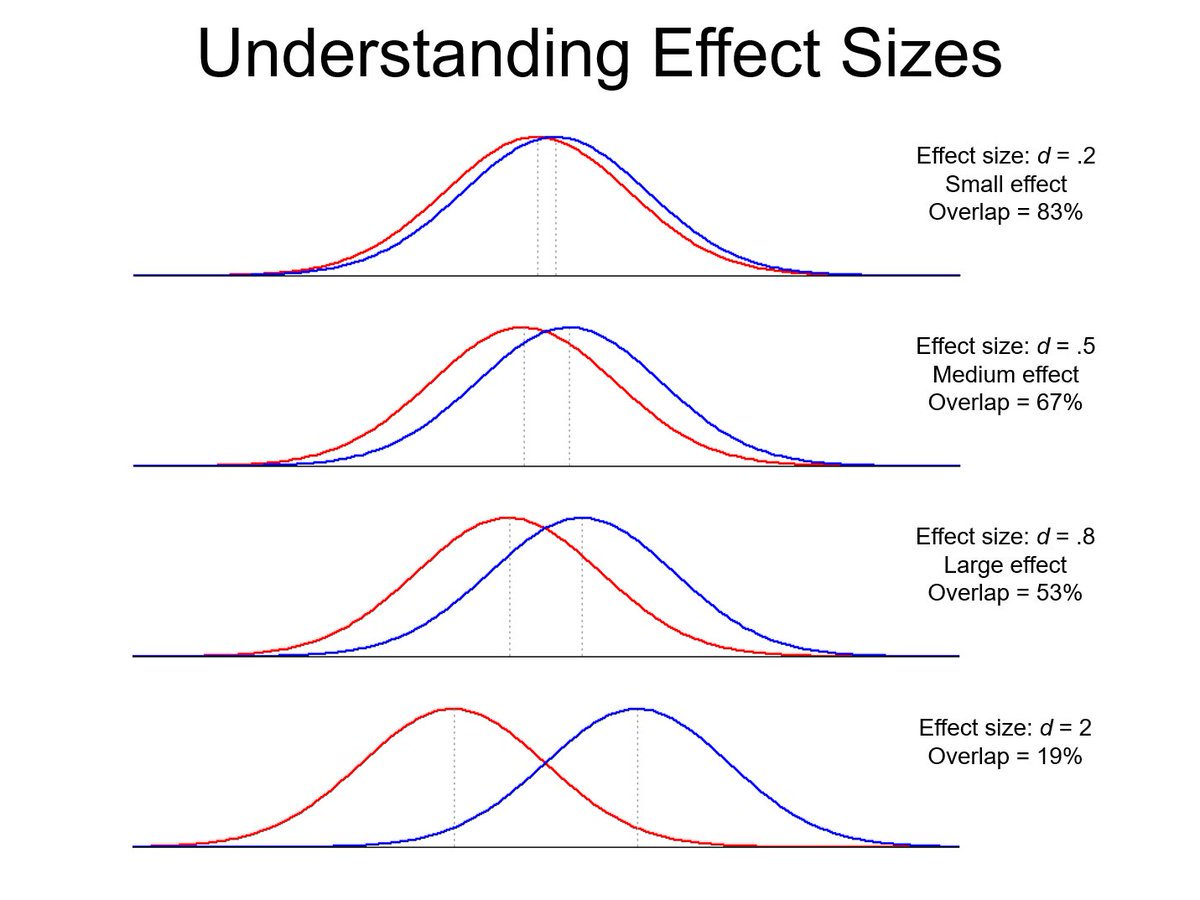As I understand it, p-values are derived from a test statistic, which measures how unlikely it is that we would get those data, assuming the null hypothesis is true.
But if this is the case, would it not be impossible to detect a statistically significant difference if the means of the two distributions are close enough?
For instance, if an effect size is considered small, how could it ever be the case that the mean of the blue distribution would ever reach a p-value of p < .05? I know conceptually that the higher the N, the lower the p-value. But how is this actually possible? My intuition is that as sample size goes up, the distribution narrows; but it's not like higher sampling actually changes the population SD. Why, then, is it the case that the higher the N, the lower the p-value?

In short, isn't it possible that two distributions could be sufficiently close to each other that they could, in principle, never be statistically significantly different from one another? This question has been killing me. Any insight would be appreciated!

